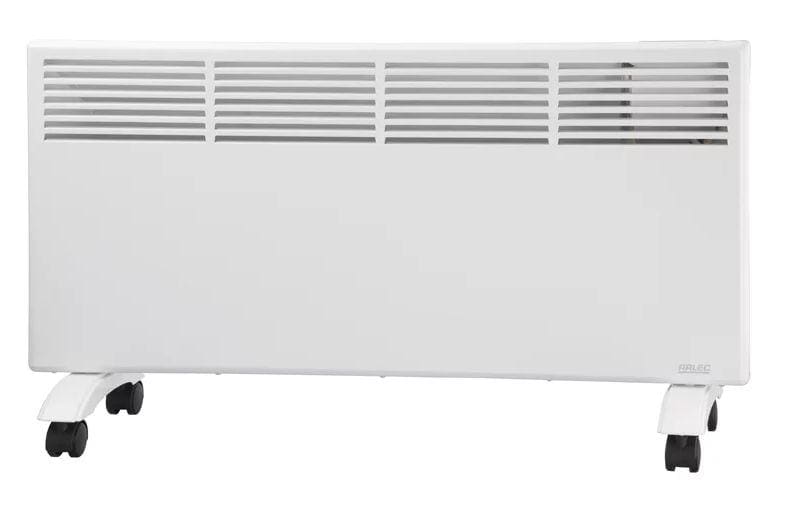
The Panel Heater Trap for New “Home Office” Workers
This is Adam “HEG-master” Hirst from Home Efficiency Group, also known as HEG. I’m currently working from home in Tasmania writing this blog after recently giving staff members, family, friends and customers some similar advice regarding working from a home office and the potential effect of heaters on their power bill.
With many people starting to do work duties in a home office due to the Coronavirus Pandemic, and cooler weather approaching, it is very tempting to use any heater that is available at home, or to buy a cheap panel heater just as a “temporary measure”. I wanted to provide you with the knowledge of how to estimate the running costs of your heater(s) so that you don’t have a P-PPPP, or Post-Pandemic Power Price Panic, when your power bill arrives after spending more time at home than usual.
Home offices have had to suddenly be created, and often heating is an afterthought.I’ll also do a series of tips over the coming days and weeks on how to stay comfortable, and some advice on cost-effective solutions to make your home more energy-efficient, and particularly how to maintain healthy air quality at home. Now, more than ever before, you must consider the respiratory health of your family so that it is not in a compromised state if you contract the coronavirus and resultant COVID-19 disease. Keep an eye on www.facebook.com/HomeEfficiencyGroup for updates.
Tip 1: Estimate the running cost of your heater in your new home office
If you are using, or planning to use, a panel heater, oil-filled heater or other kind of radiant heater in your home office, then you may be surprised at how much it can add to your power bill. To find out the running cost of your heater, and to estimate how much it will add to your electricity bill, you will need to gather the following information.

Panel heaters, fan heaters, and oil-filled heaters all have near-identical efficiency ratings, so don’t listen to nonsense marketing about how effective or efficient a particular heater is… They all cost the same to run.
- The power consumption of your heater, measured in Watts (W) or kilowatts. If you don’t know it, there should be a sticker on the side of the heater. For our calculation, let’s express this in kilowatts (kW). So, if your heater shows 1000W, that is 1kW. If it is 2400W, that is 2.4kW. If you have a figure in Watts (W), just move the decimal point three (3) places to the left to get the kW equivalent (or divide the W figure by 1000).
- We also need to determine the electricity tariff that applies to the heater. This section is assuming that you are based in Tasmania, and that you are either with Aurora Energy or 1st Energy, both of which share the same electricity tariff pricing. If you are elsewhere, simply have a look at your power bill and look for the appropriate “per kWh tariff”.
- If you are using a heater that can be plugged into, or unplugged from, a power point, then it is probably on tariff 31 (lights and power points), which is 27c per kilowatt hour (or $0.27/kWh to run). Write this figure down.
- If your heater is hardwired into your power source (i.e. can’t be unplugged from the wall), then your heater is connected to tariff 41 and the running cost per kilowatt hour is probably 18 cents, or $0.18/kWh
- Let’s now estimate how long you will use the heater during the 90 day (3 month) billing period of a typical power bill. During winter, you may have the heater on all day, or part of the day. This will depend on your tolerance to “the cold” and the thermal efficiency characteristics of your home.
- Firstly, how many days per week are you going to use the heater… 5 working days? Write that figure down.
- Estimate how many hours, on average, you will use the heater each day. Will it be on 8 hours, or a couple of hours in the morning to take the chill of. Write down this figure, and try to be practical and realistic with how may hours you will be using your heater. If you are pre-warming the room or office before you start work in there, then include that time.
- We now need to estimate the time that the heater will run, on average, per hour. This percentage figure will be a bit subjective, but will give us a more accurate calculation of the heater-related component of the power bill. The heater thermostat will keep the heater using power until the desired temperature is met, so if you have a thermally-inefficient room or the room is cavernous (meaning that there is a large air volume to try to warm), then the heater will probably be running for the majority of the time. However, if you have a house that is well-insulated in the ceiling and underfloor areas (assuming a suspended timber floor), or your home has a ducted air circulation system (aka air transfer system), or you have lots of natural light entering the room during a decent chunk of the day, then the percentage of time that the heater runs during an average hour will be much lower. Please write down the value that best describes your comfort levels in the home office on a cold day from this list.
- The room never comes close to getting warm, and I feel cold for most of the day, even though the heater is turned up “high”: Average Heater Runtime Value = 1. This value represents a situation where the heater is using electricity 100% of the time that the heater is switched on, virtually never achieving the desired temperature and going into a “standby” mode.
- Without the heater, the room quickly becomes cold: Average Heater Runtime Value = 0.75 i.e. the heater runs for 75% of the time when switched on, and is only in standby mode for one quarter of the time.
- The room is reasonably comfortable normally, but the heater is nice to take the chill off: Average Heater Runtime Value = 0.5 i.e. the heater is running only for 50% / half of the hour, approx.
- The room is naturally very comfortable with lots of natural light and warmth during the day, and the heater is just there as a back-up to maintain a nice temperature: Average Heater Runtime Value = 0.2 i.e. the heater only runs for 20% of the time, and is not using electricity for 80% of the time that the heater is switched on.
Let’s calculate how much your heater is likely to cost you on your power bill
Rightio… to calculate the anticipated $$ contribution that your heater(s) will add to your power bill, we will use the values that you have jotted down, then substitute them into the following formula.
Heater kW capacity * Tariff kWh * Avg Heater Hours Per Day * Heater Usage Days Per Week * 12.8 (the number of weeks in a 90 day billing period) * Estimated Heater Runtime Value = the anticipated cost on your quarterly power bill in dollars.
Please note – this formula doesn’t take into account if you are selecting a really low temperature on your heater… it assumes a living-room (high) temperature in the range of 20 to 23 degrees). If you have a high tolerance to the cold and have “rugged up” (as mum says!), then this estimate is probably on the higher side.
A common scenario…
Let’s substitute in some values using a made-up scenario of a 2400W (2.4kW) panel heater that is plugged into the wall, so it is on tariff 31 (27c/kWh, or $0.27/kWh). The heater will be used 5 days per week, 8 hours per day (which includes a warm-up period in the morning). I will assign a Heater Runtime Value of 75% (0.75) because the room is a converted large bedroom (2.9m ceilings), and the ceiling insulation is 25+ years old, and it only gets a bit of sun in the morning.
Your anticipated quarterly (3 monthly) electricity bill that is associated with your panel heater would be = 2.4kW heater * $0.27/kWh tariff * 8 hours/day * 5 days/week * 12.8 weeks per quarter * 0.75 heater runtime value = $248.83
Now, this is assuming that the panel heater will be on standby (no electricity consumption) for 25% of the time. If the ceiling is higher, or the room bigger, or you don’t have a thermally-efficient room or home, or you have lots of draughts, then the panel heater is likely to be used closer to 100% of the time, which would result in a $300 to $330 increase in your power bill… from one small heater! Some households have multiple people working from home, so you’ll need to multiply the above figures by the number of heaters.
Alternatives to panel heaters
There are several ways that you can minimise heating costs in a home. This section is only a very basic overview.
- Always check your ceiling insulation. A top-up of ceiling insulation typically adds 6 to 7 degrees to the overnight ambient temperature.
- If you have a raised timber floor, and it is accessible, then install subfloor insulation.
- If you already have a good heat source in the living room (such as a heat pump / reverse cycle air conditioner, or a wood heater), and you want to utilise some of that heat in your home office, then consider a DIY air transfer kit or a whole-of-house ducted solution, such as the HEG Ducted Air Circulation System. These have filtered inlets, subtle outlets, energy-efficient and quiet fans, built-in roof heat recovery modules that turn your roof into a giant solar air heater, as well as digital controllers, etc
- If you have a larger room for your home office, and would like direct heating and cooling, then a heat pump (reverse cycle air conditioner) is the most energy-efficient heater that you can get. They produce approx 4 times more heat output for the same power input as the panel heater! This results in a comfortable heat, especially for those that feel the cold, for less $$$.
Want some options for your home in Tasmania? Email HEG at info@heg.com.au, call 1300 968 060 and view more at www.heg.com.au. Thanks for reading!
